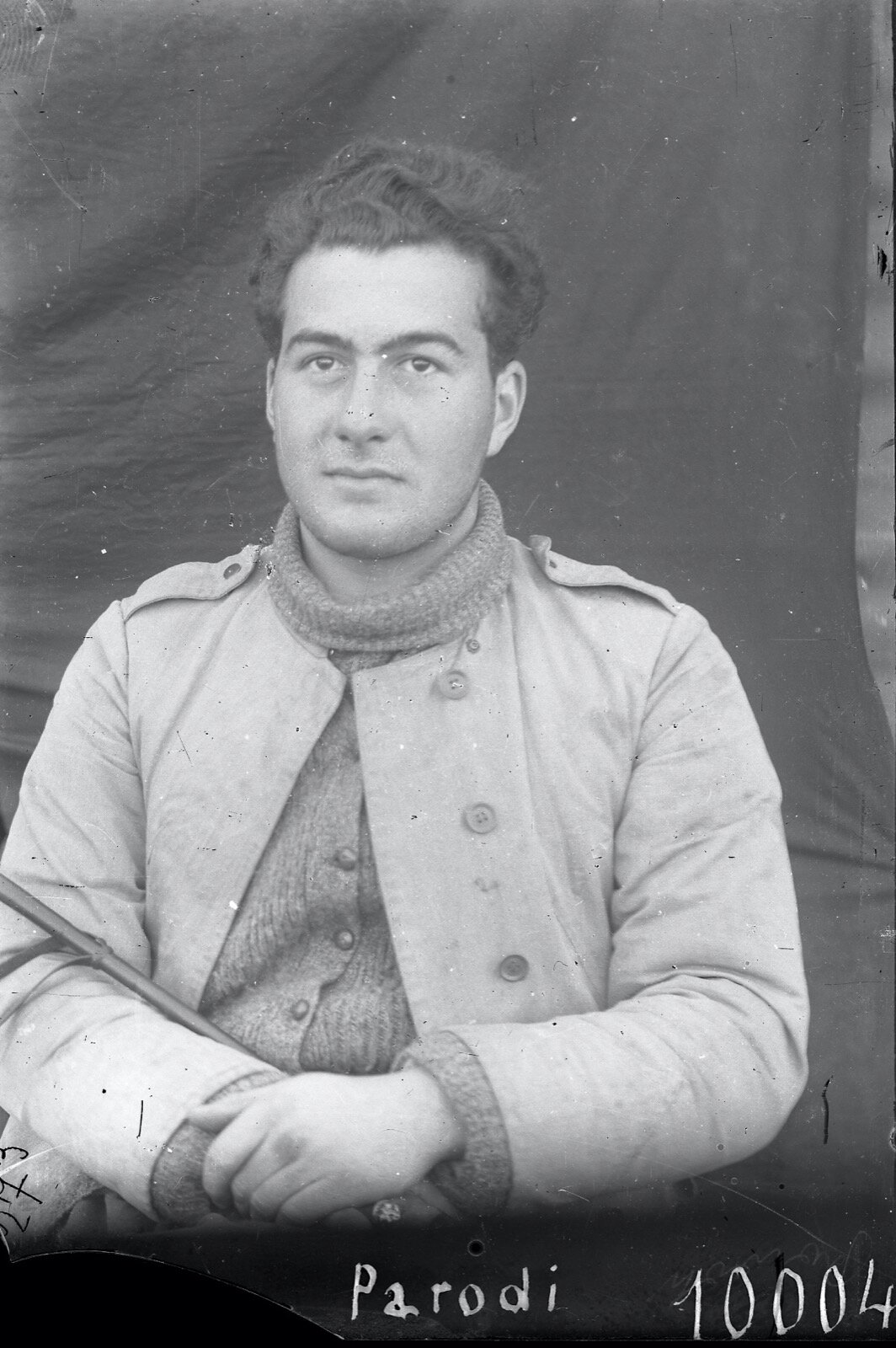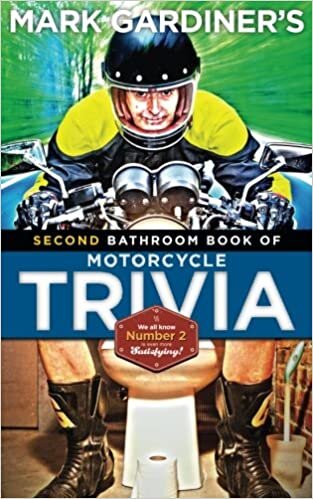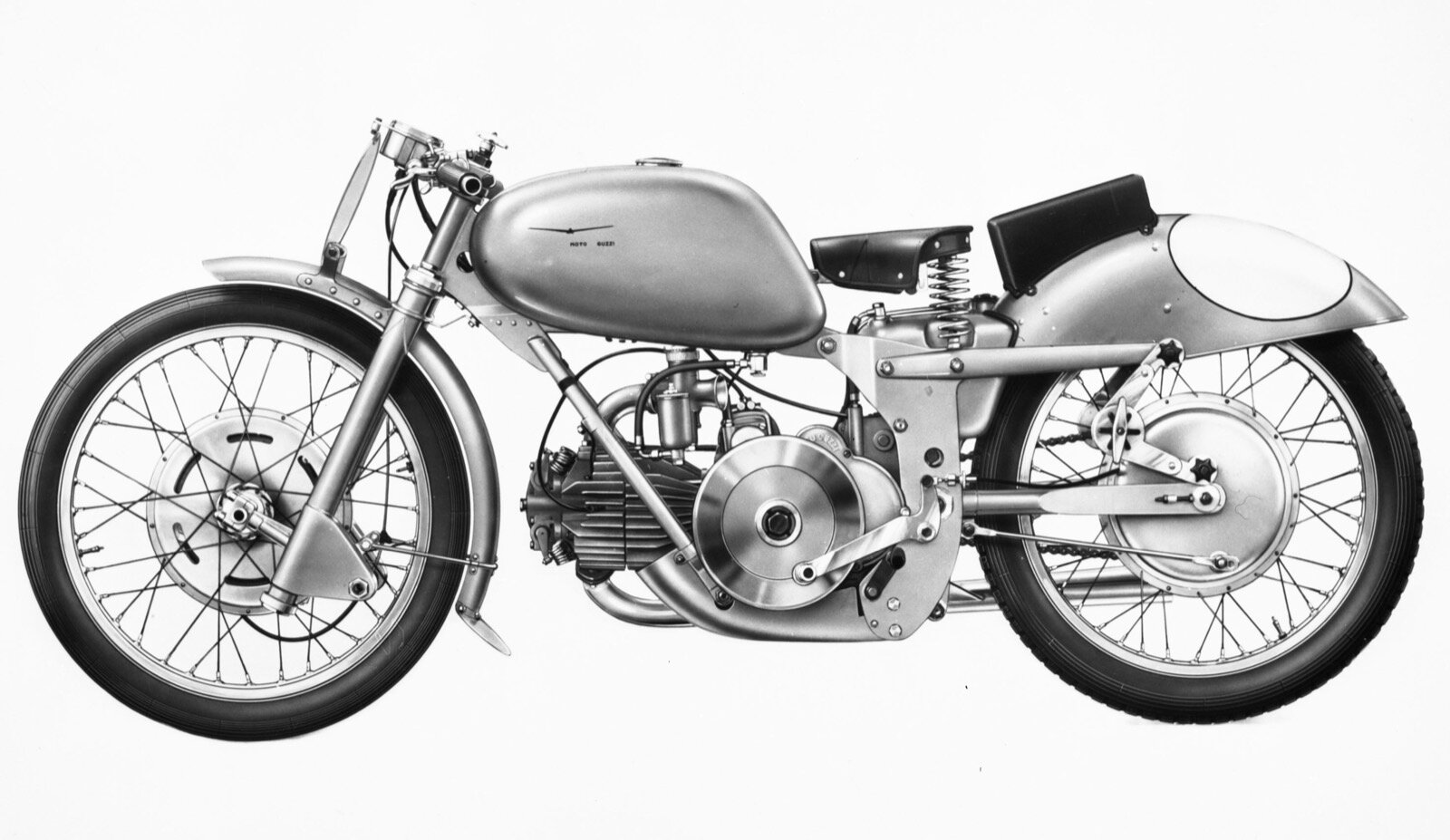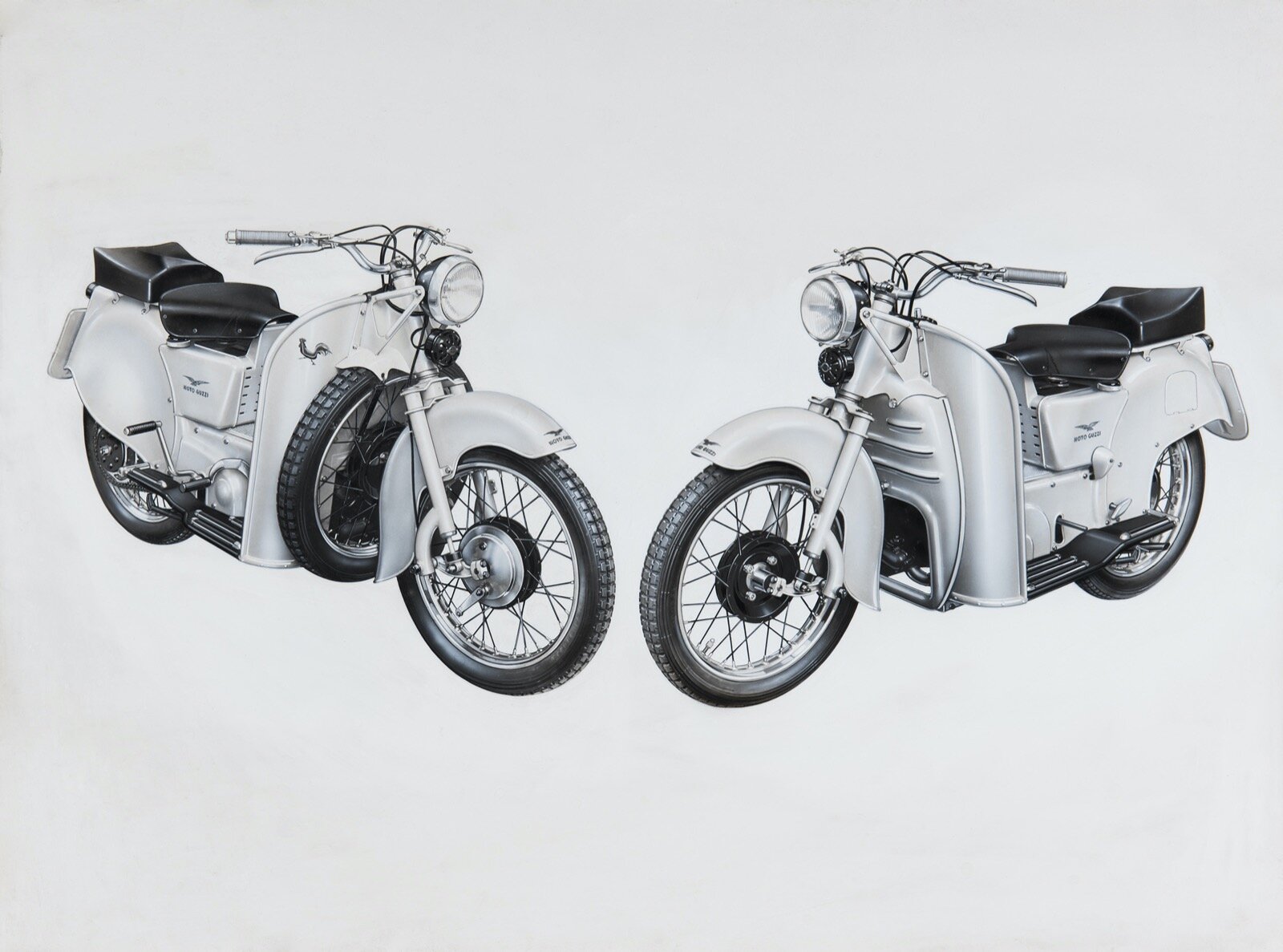Moto Guzzi recently celebrated its 100th anniversary. Unlike some historic brands (cough Triumph, cough cough Indian) Guzzi’s ownership status may have changed a few times but it’s been in continuous operation.
The current owners, Piaggio Group, took an interesting approach to Centenary PR. Normally I’d expect a company to craft a press release and curate a handful of photos, with the idea of controlling the story. But to their credit, Piaggio pulled countless photos from their archives and sent them to journalists via WeTransfer.
This approach gave me so much to work with that I had to limit myself to the first half of Guzzi’s history – the period in which design and engineering was led by Carlo Guzzi himself. That story ran in Common Tread but in order to do justice to Piaggio’s generous document dump, I’ve posted a much larger selection of photos here. (Although I’m grateful to have access to this material, it was provided with minimal captioning info. I’ve added what I know – or sometimes just what I suspect. All photos courtesy of Moto Guzzi. – MG)
The Founders
Giorgio Parodi was the son of a Genovese shipping magnate. His family funded the founding of the company.
Carlo Guzzi (standing). The rider is Siro Casale, who raced in the 1920s and worked in Moto Guzzi’s repair department in the ‘30s. He’s seen here during a private test at Monza. The motorcycle is a supercharged 500 four that was raced only once.
Giovanni Ravelli was to join the firm but he died during an airplane test flight. The intrepid pilot is commemorated in Moto Guzzi’s eagle logo.
Riders
Omobono Tenni, en route to Lightweight TT victory.
Bruno Ruffo, 1951.
Fergus Anderson. (Sorry, no ID on pillion.)
Milan-Taranto race, 1953
Bruno Ruffo
Keith Campbell on the V-8 in 1957. Moto Guzzi dropped out of Grands Prix at the end of that season and the Aussie privateer began the ‘58 season on a Manx Norton. He was killed in a non-championship race in France.
Bill Lomas, en route to the 350cc World Championship in 1956.
Fergus Anderson, 1954
Enrico Lorenzetti in 1953. Check out that duckbill fairing. Was it designed to channel clean air down to the cylinder head?
Lorenzetti in 1953, again.
Gianni Leoni, crawling under the paint of his ‘49 Gambalunghino 250cc production racer.
L-R: Carlo Guzzi, Stanley Woods, Giorgio Parodi. Junior TT? 1935?
Piaggio’s birthday gift to us included several minutes of historic film clips…
Motorcycles: 1921-’67
The original Moto Guzzi: 1921 Normale e.o.i 500
‘21 Normale
Sweet illustration of, again, ‘21 Normale
Corsa 2V: The first of many production racers
2VT 500 (Not sure of the year)
1924 C4V dual-port single production racer
1928 Norge Grand Touring: The first production Moto Guzzi with rear suspension
1929 Sport 14
1931 Sport 15
1935 Bicylindrica: Factory 500cc racer that, decades later, inspired Fabio Taglione to build the first Ducati v-twin
Another view of the Bicylindrica
1940 Airone (“Heron”) 250
1945 G.T.V.
1945 Motoleggero (65cc)
Another 65cc Motoleggera, aka “Guzzino”
1946 Dondolino production racer
1946 Super Alce (“Super Elk”)
1949 Gambalunga (“Long Legs”) production racer
1950 Falcone Sport
Falcone Turismo
1950 Galetto 160cc
175cc Galetto from later in this model’s long life.
1951 Gambalunga
Gambalunghino 250cc racer (date?)
Inline four-cylinder, shaft-drive 500 GP racer from 1953
1956 Lodola GT
350cc factory racer. Moto Guzzi won the World Championship in this class five years in a row in the mid-’50s.
A shrine to the Guzzisti, or a monument to glorious failure? Giulio Carcano’s V-8 is replete with evidence of the engineer’s genius, but it never won – indeed rarely even finished – a World Championship race.
1956 Otto Cylindri in exquisite as-raced patina
Beautiful period illustration of the 1957 Otto Cylindri V-8
1957 Stornello 125
1960 Stornello Sport
1960 Zigolo 110cc
In 1950, Moto Guzzi became the first motorcycle manufacturer with its own wind tunnel.
Airflow was generated by a 350 horsepower aircraft engine.
The factory over the years
Year One.
Surrounded by green fields!
1925
1933-’35. The houses of Moto Guzzi employees rise on the hillside at right rear.
1948-’52.
A view of the factory as it was when Moto Guzzi went into receivership in 1967.
In ancient times, Lake Como was known as Lario.


























































